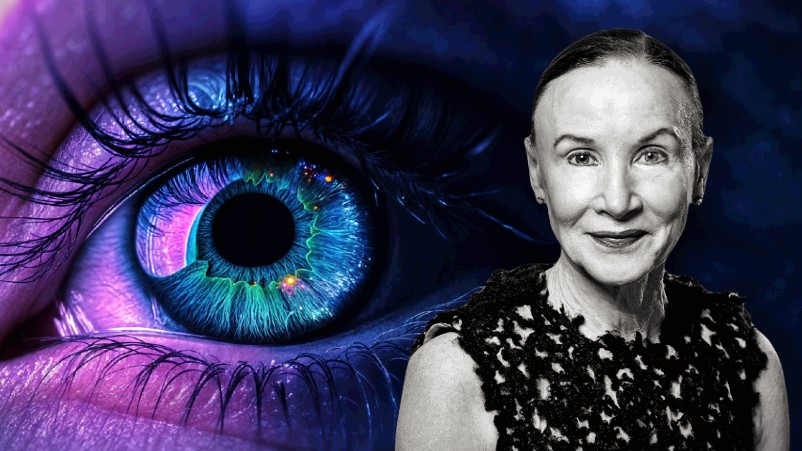Advertiser flight from linear TV to streamers not matching effectiveness, ROI benchmarks as Adgile appoints top Nine exec Richard Hunwick Chief Commercial Officer

Adgile founder Shaun Lohman (l) and new Chief Commercial Officer Richard Hunwick: “I see confusion, to be honest,” says Hunwick. “We've seen significant money come out of the free-to-air pie over the past 12 to 18 months but I'm not sure it is justified."
Sentiment is driving investment out of linear TV, not data, according to the newly appointed Chief Commercial Officer of specialist TV and video measurement firm Adgile, Richard Hunwick – although the former veteran Nine TV advertising executive is not as bolted to the broadcaster system as some might expect. Right now “I see confusion” in the market, said Hunwick, who flagged longer-term ambitions for the firm to expand its “plug and play” platform across audio, OOH and display advertising measurement but, he insisted, “we’re not looking to recreate a currency”.
A vast majority of advertisers on streaming services are taking a very broad approach that’s not delivering for them
Sobering SMI data released yesterday showed the total ad market declined 7.8 per cent in July with terrestrial TV off 10.1 per cent on the previous year while digital video revenues increased 11 per cent. The problem for advertisers and media agencies in their investment exodus out of linear into new streaming ad tier services and other digital video options is that they are not matching linear TV’s effectiveness and ROI – yet.
“The digital evolution is not going anywhere – everybody's moving money and it's only going one way,” Hunwick told Mi3. “But does it go to BVOD, does it got to SVOD, does it go to YouTube? Every single client in the country is trying to line-up that video ecosystem and it’s not easy because of disparate measurement systems and the rest. I see confusion, to be honest. We've seen significant money come out of the free-to-air pie over the past 12 to 18 months but I'm not sure it is justified. Decisions are being made without the right inputs. I don't think people are looking at those conversations with any particularly informed viewpoint.”
Adgile founder Shaun Lohman said the aggregate results the company is seeing across its client portfolio this year – revenue has surged 30 per cent with 100 new brands and agencies deploying the platform for the first time in the next month – is that campaigns “are not delivering as they used to two or three years ago and they’re scrambling to understand why.”
Lohman said the default assumption across the market was “blaming linear audience declines” as the problem, which exacerbated the revenue flight from broadcast but “actually, that’s not the problem. The problem is Australian TV now needs to be more sophisticated”.
Some streaming channels can work “fantastically well”, said Lohman, but most advertisers are not using them “in a way that actually generates the same outcomes as they would generate from linear – they just take linear practices and apply them to streaming services. That just doesn’t work. The experience is different, the content is different – but they’re not changing or understanding the nuance and therefor they’re not getting the same output," he said.
"It’s TV but it’s not TV. Some brands are doing that very well, but the vast majority of advertisers are just taking a very broad approach that’s not delivering for them – and it’s taken them too long to understand it’s not delivering. Generally, the ones that are doing quite well are always those advertisers that have always looked at the data, so direct response-type advertisers, people that really understand that they have to optimise campaigns.”
Attribution attrition
Hunwick said a key reason for his move to Adgile was the ability to understand in “granular detail” why a campaign was or was not working in a real business impact context.
“Measurement currencies are one thing but the ability to make sense of how an audience input is delivering a business output is where the mission is,” he said.
Adgile captures every video and TV ad across broadcast, streaming and digital by industry category, breaks down the campaign messaging, product, price points, target markets and adjacent search, web and app traffic for specific advertisers.
“We’re talking about getting very granular around the why,” said Hunwick. “In a raw sense it’s attributing an outcome to an input – but unfortunately attribution has been hijacked by the platforms themselves and now attribution is known for misrepresenting or inflating last click, last touch.”
Cross-channel play
Lohman and Hunwick said the focus for the business in the short-term is sticking to TV and video but longer-term it has OOH, audio and display in its sights. Emerging measurement alternatives like cross-media firm Beatgrid are complimentary and could work together, they said.
“We’re looking to provide some long-term sustainability and growth for the industry otherwise in five years time everything will just live on Amazon,” Hunwick said.
“We want to take the core technology and the smarts behind that and start to think about Adgile in a broader fashion. How do we take what we know about television and plug it into audio, for instance? How do we take what we know about the way that we've been measuring television and plug it into a display environment, or potentially a social media environment? From a client perspective, how do we look at outdoor and build that in, because we do know clients at the top end don't just want to get a full picture, they want to get a full picture of 'if I do that today, what result is it going to give me tomorrow?' That’s part of the bigger plan.”


